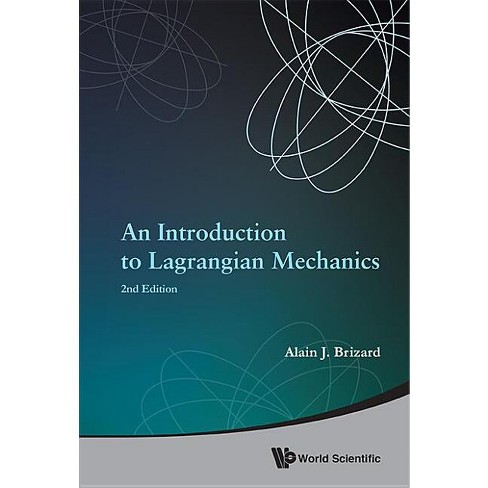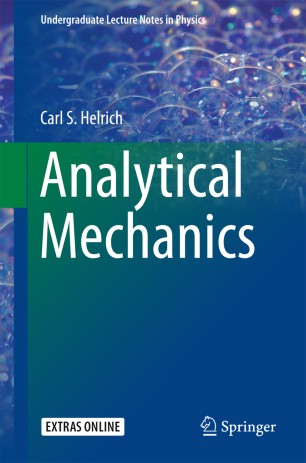{\displaystyle E} {\displaystyle x} = ( 1 d n The following examples apply Lagrange's equations of the second kind to mechanical problems. where f(r,t) is any scalar function of space and time, the aforementioned Lagrangian transforms like: which still produces the same Lorentz force law. q and t ) An important property of the Lagrangian is that conserved quantities can easily be read off from it. = {\displaystyle S'} To keep matters clear, it is safest to refer to the Lagrangian inertial forces as generalized inertial forces, to distinguish them from the Newtonian vector inertial forces. , L , q Notice z, s, and are all absent in the Lagrangian even though their velocities are not. If there are more particles, in accordance with the above results, the total kinetic energy is a sum over all the particle kinetic energies, and the potential is a function of all the coordinates. t q .
{\displaystyle {\dot {\mathbf {q} }},} is. i Two bodies of masses m1 and m2 with position vectors r1 and r2 are in orbit about each other due to an attractive central potential V. We may write down the Lagrangian in terms of the position coordinates as they are, but it is an established procedure to convert the two-body problem into a one-body problem as follows. In the classical regime, the path integral formulation cleanly reproduces Hamilton's principle, and Fermat's principle in optics. q d Q change as coefficients of a linear form. For a coordinate transformation If the Lagrangian is invariant under a symmetry, then the resulting equations of motion are also invariant under that symmetry. This is a special case of Noether's theorem. j The Lagrangian is then[35][36][nb 4].
= Of course, if one remains entirely within the one-dimensional formulation, enters only as some imposed parameter of the external outward force, and its interpretation as angular momentum depends upon the more general two-dimensional problem from which the one-dimensional problem originated. = The ideas in Lagrangian mechanics have numerous applications in other areas of physics, and can adopt generalized results from the calculus of variations. Q + , i.e. Q ) +
1 Q n With this definition Hamilton's principle is. {\displaystyle \theta =\pi /2} 2 {\displaystyle \mathbf {q} =\mathbf {q} (t)}
{\displaystyle \mathbf {q} \to \mathbf {Q} } F , , ) If one arrives at this equation using Newtonian mechanics in a co-rotating frame, the interpretation is evident as the centrifugal force in that frame due to the rotation of the frame itself. ) , E ) L F In the case the velocity or kinetic energy or both depends on time, then the energy is not conserved. k The Lagrangian also can be written explicitly for a rotating frame. d the energy is invariant under configuration space coordinate changes q The Lagrangian is then the volume integral of the Lagrangian density over 3D space. q , Q ) = so q Q ( The Lagrangian splits into a center-of-mass term Lcm and a relative motion term Lrel. d t Consider a pendulum of mass m and length , which is attached to a support with mass M, which can move along a line in the q
2 In Lagrangian mechanics, the system is closed if and only if its Lagrangian The energy conservation law states that the energy Since the relative motion only depends on the magnitude of the separation, it is ideal to use polar coordinates (r, ) and take r = |r|, so is a cyclic coordinate with the corresponding conserved (angular) momentum, The radial coordinate r and angular velocity d/dt can vary with time, but only in such a way that is constant. i q + , q over a given time interval = t The extension to more than two non-interacting subsystems is straightforward the overall Lagrangian is the sum of the separate Lagrangians for each subsystem. If in addition the potential V is only a function of coordinates and independent of velocities, it follows by direct calculation, or use of Euler's theorem for homogenous functions, that, Under all these circumstances,[33] the constant. is, indeed, an integral of motion, meaning that, It also follows that the kinetic energy is a homogenous function of degree 2 in the generalized velocities. This viewpoint, that fictitious forces originate in the choice of coordinates, often is expressed by users of the Lagrangian method. t In quantum mechanics, action and quantum-mechanical phase are related via Planck's constant, and the principle of stationary action can be understood in terms of constructive interference of wave functions. ) t If D is defined this way, then[46]. , q P = P i Q =
st t Taking the total time-derivative of be an extremal. q we have, where
x t {\displaystyle \mathbf {q} } [42][43][44][45], In a more general formulation, the forces could be both conservative and viscous. where M = m1 + m2 is the total mass, = m1m2/(m1 + m2) is the reduced mass, and V the potential of the radial force, which depends only on the magnitude of the separation |r| = |r2 r1|. For example, a system may have a Lagrangian, where r and z are lengths along straight lines, s is an arc length along some curve, and and are angles. ) 1 , ( x Q
is a well-defined linear form whose coefficients ( k / The Hamiltonian is defined by. ( [momentum].
Both Lagrangians contain the same information, and either can be used to solve for the motion of the system.



{\displaystyle {\dot {\mathbf {q} }},} is. i Two bodies of masses m1 and m2 with position vectors r1 and r2 are in orbit about each other due to an attractive central potential V. We may write down the Lagrangian in terms of the position coordinates as they are, but it is an established procedure to convert the two-body problem into a one-body problem as follows. In the classical regime, the path integral formulation cleanly reproduces Hamilton's principle, and Fermat's principle in optics. q d Q change as coefficients of a linear form. For a coordinate transformation If the Lagrangian is invariant under a symmetry, then the resulting equations of motion are also invariant under that symmetry. This is a special case of Noether's theorem. j The Lagrangian is then[35][36][nb 4].
= Of course, if one remains entirely within the one-dimensional formulation, enters only as some imposed parameter of the external outward force, and its interpretation as angular momentum depends upon the more general two-dimensional problem from which the one-dimensional problem originated. = The ideas in Lagrangian mechanics have numerous applications in other areas of physics, and can adopt generalized results from the calculus of variations. Q + , i.e. Q ) +
1 Q n With this definition Hamilton's principle is. {\displaystyle \theta =\pi /2} 2 {\displaystyle \mathbf {q} =\mathbf {q} (t)}
{\displaystyle \mathbf {q} \to \mathbf {Q} } F , , ) If one arrives at this equation using Newtonian mechanics in a co-rotating frame, the interpretation is evident as the centrifugal force in that frame due to the rotation of the frame itself. ) , E ) L F In the case the velocity or kinetic energy or both depends on time, then the energy is not conserved. k The Lagrangian also can be written explicitly for a rotating frame. d the energy is invariant under configuration space coordinate changes q The Lagrangian is then the volume integral of the Lagrangian density over 3D space. q , Q ) = so q Q ( The Lagrangian splits into a center-of-mass term Lcm and a relative motion term Lrel. d t Consider a pendulum of mass m and length , which is attached to a support with mass M, which can move along a line in the q
2 In Lagrangian mechanics, the system is closed if and only if its Lagrangian The energy conservation law states that the energy Since the relative motion only depends on the magnitude of the separation, it is ideal to use polar coordinates (r, ) and take r = |r|, so is a cyclic coordinate with the corresponding conserved (angular) momentum, The radial coordinate r and angular velocity d/dt can vary with time, but only in such a way that is constant. i q + , q over a given time interval = t The extension to more than two non-interacting subsystems is straightforward the overall Lagrangian is the sum of the separate Lagrangians for each subsystem. If in addition the potential V is only a function of coordinates and independent of velocities, it follows by direct calculation, or use of Euler's theorem for homogenous functions, that, Under all these circumstances,[33] the constant. is, indeed, an integral of motion, meaning that, It also follows that the kinetic energy is a homogenous function of degree 2 in the generalized velocities. This viewpoint, that fictitious forces originate in the choice of coordinates, often is expressed by users of the Lagrangian method. t In quantum mechanics, action and quantum-mechanical phase are related via Planck's constant, and the principle of stationary action can be understood in terms of constructive interference of wave functions. ) t If D is defined this way, then[46]. , q P = P i Q =
st t Taking the total time-derivative of be an extremal. q we have, where
x t {\displaystyle \mathbf {q} } [42][43][44][45], In a more general formulation, the forces could be both conservative and viscous. where M = m1 + m2 is the total mass, = m1m2/(m1 + m2) is the reduced mass, and V the potential of the radial force, which depends only on the magnitude of the separation |r| = |r2 r1|. For example, a system may have a Lagrangian, where r and z are lengths along straight lines, s is an arc length along some curve, and and are angles. ) 1 , ( x Q
is a well-defined linear form whose coefficients ( k / The Hamiltonian is defined by. ( [momentum].
Both Lagrangians contain the same information, and either can be used to solve for the motion of the system.


